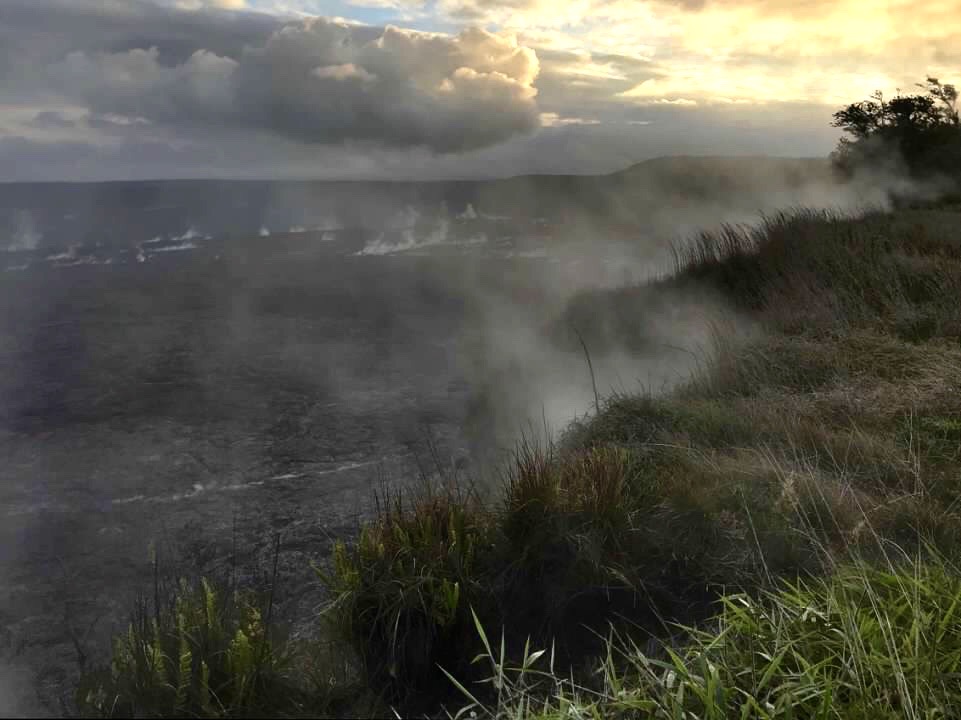
Overview
Hawaii Volcanoes National Park is located on the south edge of Hawaii’s Big Island. It protects two active volcanos: Kīlauea, one of the most active volcanoes in the world, and Mauna Loa, the world’s largest shield volcano. Native Hawaiians consider Kīlauea’s caldera to be the home of Pele, the volcano goddess. In the 1840s, Benjamin Pittman established the Volcano House on the Kīlauea’s crater rim. Mark Twain stayed at Volcano House during his influential tour of Hawaii in 1866. In 1903, the idea to create a national park in Hawaii began to gain steam. Lorrin Thurston lobbied for the park’s creation. John Muir, Theodore Roosevelt, and Henry Cabot Lodge endorsed the idea. Finally, the park was created in 1916. At that time, the park was called Hawaii National Park. It was the 11th national park, and the first in a U.S. territory (Hawaii did not become a state until 1959). It included what is today Hawaii Volcanoes and Haleakalā on the island of Maui. In 1961, Hawaii National Park was renamed Hawaii Volcanoes National Park, and Haleakalā became its own national park.


Our Visit to Hawaii Volcanoes
Kilauea’s flowing lava is the park’s main attraction. Unfortunately, we visited Hawaii Volcanoes in the spring of 2019 – while there was no active lava flow. Hopefully this post gives visitors ideas of what else to do in the park besides viewing lava. We’ll return someday to see flowing lava.

Ranger Walk
We arrived in the morning in time to join a ranger walk along the Sulphur Banks Trail to the Crater Rim Trail. In addition to sulphur banks, the Sulphur Banks Trail passes several steam vents. The sulfuric acid from the steam breaks down the lava rocks and turns them into red clay. The ranger told us about Pele’s Hair – thin ribbons of glass that blow out of the volcano during eruptions and travel for miles. He encouraged us to pick some ʻŌhelo berries to try.





We appreciated the ranger’s knowledge of geology as well as his knowledge of Hawaiian culture. He told us the story of the ʻōhiʻa lehua tree. ʻ‘Ōhiʻa was engaged to marry Lehua, but Pele fell in love with ‘Ōhiʻa. When he rejected her, Pele turned him into a tree. The other gods felt bad for Lehua and turned her into a flower. They placed her on the tree, so they could be together forever. When a Lehua flower is picked, the sky begins to rain symbolizing Lehua’s tears.


Halema’uma’u Trail
This is a great trail! It begins behind Volcano House where it branches off from Crater Rim Trail. It descends through a rain forest on its way to the floor of the Kīlauea caldera. We loved seeing the huge ferns and other tropical plants along the narrow walkways carved in the stone. The trail is 1.8 miles round trip and rated moderate.




Chain of Craters Road
Chain of Craters Road travels 19 miles from Crater Rim Drive to the Pacific Ocean. On the afternoon of our visit, it felt like we had this whole section of the park to ourselves. The road offers views of various craters, lava flows and the ocean. We hiked the Devastation Trail and part of the Nāpau Trail. We enjoyed seeing how the plants were slowly coming back to areas that were covered by lava flows.






Further down the road, there are beautiful views of the Pacific Ocean and the Hõlei Pali. The Hōlei Sea Arch is a rewarding end to the journey down Chain of Craters Road.



We ended our visit to Hawaii Volcanoes by watching the sunset over Kīlauea’s crater rim!

Click here for more of our favorite things to do in Hawaii!
Click here for more Land of Liberty Explorers!
Pin this post to share with friends!


